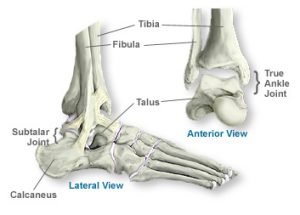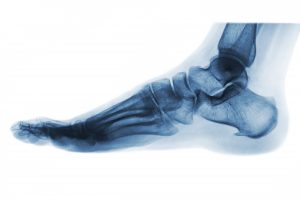HAGLUND’S DEFORMITY
 Also called Haglund’s Heel, Haglund’s Deformity affects the back of the foot on the heel. Haglund’s Deformity forms due to pressure placed on the heel, often from wearing ill-fitted shoes or poor gait while walking. When the shoe rubs against the heel constantly or an individual walks incorrectly, it places pressure on the bony prominence at the back of the heel. This bony prominence rubs against the Achilles tendon and irritates the bursa sac, leading to bursitis.
Also called Haglund’s Heel, Haglund’s Deformity affects the back of the foot on the heel. Haglund’s Deformity forms due to pressure placed on the heel, often from wearing ill-fitted shoes or poor gait while walking. When the shoe rubs against the heel constantly or an individual walks incorrectly, it places pressure on the bony prominence at the back of the heel. This bony prominence rubs against the Achilles tendon and irritates the bursa sac, leading to bursitis.
Symptoms of haglunds deformity
Due to the nature of Haglund’s Deformity formation, Haglund’s Deformity can occur in both feet or a single foot. Individuals suffering from Haglund’s Deformity can feel the pain but often also see visible symptoms. Symptoms of Haglund’s Deformity include:
- Pain on the back of the heel
- A prominent bump on the back of the heel
- Visible swelling near the back of the heel
- Redness on the back of the heel
How to treat Haglund’s Deformity
When treating Haglund’s Deformity, foot and ankle physicians initially try to treat it using conservative treatments. Conservative treatments include:
- Non-steroidal Anti-Inflammatory medications
- Physical Therapy
- Shoe orthotics
- Casting or bracing
- Steroid injections
While physicians always attempt conservative methods, surgery remains the only true solution that gets rid of or decreases the size of the bony prominence. For most patients, conservative treatment decreases the pain enough so that they do not require surgical intervention.
If a foot and ankle surgeon determines that the patient requires surgery, they perform the surgery on an outpatient basis. Outpatient means that the patient returns home following the surgery. Typically, surgeons perform surgery to treat Haglund’s Deformity under general anesthesia. Under general anesthesia, the patient remains fully asleep for the entirety of the procedure. While asleep, the patient cannot feel anything. Surgery to treat Haglund’s Deformity often has a goal of either removing the prominent bone or repairing a degenerative Achilles tendon. To remove the prominent bone, the surgeon makes a small incision next to the Achilles tendon and then removes the bone. To treat a degenerative Achilles, the surgeon makes an incision and removes the diseased portion. Often, if treating the Achilles tendon, the surgeon removes the bony prominence too.
Following surgery, the recovery depends on the type of surgery performed. If surgery only involves the bony prominence, the patient typically must use crutches for two weeks and wear a brace or splint. If the surgeon must repair  the Achilles tendon, the recovery takes longer. Often the patient must wear a boot and use crutches for greater than two weeks. In addition, the patient must participate in physical therapy to strengthen the tendon and surrounding muscles.
the Achilles tendon, the recovery takes longer. Often the patient must wear a boot and use crutches for greater than two weeks. In addition, the patient must participate in physical therapy to strengthen the tendon and surrounding muscles.
To view a list of all insurances that AOA Orthopedic Specialists accept, click HERE. To schedule an appointment online, click HERE.

